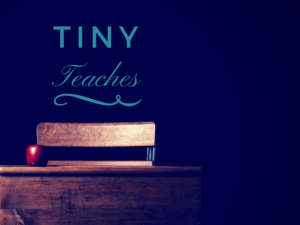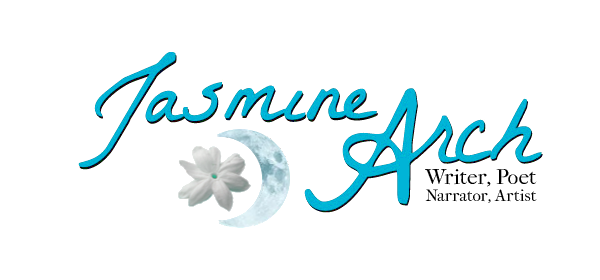Visuals in Writing
Do You See What I See?
 I’ve always had a very deep love for language, especially the written word, in all its forms. I’ve been reading for as long as I can remember. I mostly loved the stories that put me right in the middle of the action–the stories that played out before my eyes like a movie.
I’ve always had a very deep love for language, especially the written word, in all its forms. I’ve been reading for as long as I can remember. I mostly loved the stories that put me right in the middle of the action–the stories that played out before my eyes like a movie.
When I secretly dreamed of writing fiction, those were the stories I wanted to write.
Words may not flow from your mind and onto your page as swiftly or as naturally as you might hope. That’s OK. Writing is something you can practice. A skill you can develop.
Do that first. Start your magnum opus second. At least, that’s my plan. It’s what I’ve been doing so far. With the help of the wonderful members of The INKubator, I’ve been sharpening my quill on short stories. Getting a feel for what it’s like to write. Improving my writing skills. Trying to find my style, my voice.
That style, so far, is hard to define. Sometimes I think I’m a minimalist but then I surprise myself with a slip of poetic prose that makes me wonder where it could have come from. What I do know is that, both as a writer and as a reader, I’m very visually oriented.
You see, my mind doesn’t use words. My thoughts are made of images and schematics and I have to actively work to turn them into words. I’ve always thought of this as a disadvantage. I get a lot of funny looks when I pull out my trusty paper pad to sketch out what I’m trying to say. It made me think most people’s minds don’t work that way.
I was talking to my friend Andrew about a project we’re both working on, and we came to the subject of my weirdness. Only, he didn’t consider it a weirdness. He actually liked the visual way my mind works. It defines the way I write and include visual details in my writing, and it seems that he considered it a good thing.
Not weird at all. Go figure.
Can You Show Me What You See?
Writing visually is not only something that feels natural to me. I believe that is what helps me with the infamous “Show vs Tell” dilemma that plagues so many writers. The more you show your readers the story, instead of telling it to them, the more you remove your presence from the story. This allows them to feel closer to your characters–to feel like they are in the story, rather than just reading about it.

Image: courtesy of Jonny Lindner via Pixabay
Showing rather than telling is an important part of Deep POV writing, but it’s not limited to just that. A story with a clear, recognisable omniscient narrator still needs to feel real to the reader.
Walking a Tightrope
You’ll find lists and dictionaries full of different words to describe things. Ways of walking, ways of looking, ways of frowning. But I’ve found very little about how to bring them to life.
Getting the balance just right can be difficult.
Is there life in the void?
Add too little, and your story may feel like it takes place in a vacuum.
“I can’t do this anymore,” she said. He looked at her as he asked, “Do what, darling?”
She turned away from him as she replied, “This. Us. We’re sharing the same house, but we’re living separate lives. Maybe we should get a divorce.”
This example, to me, feels like it’s happening in a darkened room. I’m not seeing it and it feels rather cold and distant. Surely, this woman must be feeling something when she brings up a possible divorce. But I can’t see it. Are there tears in her eyes? Is she looking into his and hoping for a response? Is she angry? Sad?
Too Much of a Good Thing
Add too much detail and your reader will get lost. He won’t see the forest because of the trees blocking his view (free interpretation of a Belgian saying).
On his feet for a second time, he traveled amongst the trees until he left the woods and happened upon a meadow. The meadow was flat, full of fresh green grass. It slanted down and back up into a mass of rolling hills that seemed to go on forever.
Where else would he be traveling if he was in the woods? They usually are full of trees after all. The description of the meadow at the edge of the forest can be tightened as well. There is also a bit of an inconsistency in how I interpret this description. If the meadow starts out being flat, how can it later slope down and up again? Hilly and flat seem a bit incompatible to me.
Lessons in Acrobatics
Let’s get up on that tightrope. Just don’t hang it too high because I’m scared of heights.
There are many ways to get the visuals in your story just right.
See What You Want To Write
This is my go to method. I already do this every day when I talk. My thoughts need to be translated into words anyway. I’ve seen a scene a dozen times before I start writing. I know where each character will be standing and what they’ll be doing. I’ve seen it through the eyes of every character in there.
I just didn’t realise this is what I did until I talked it through with Andrew.
Become Your POV Character
Live and see the scene through the eyes of the scene’s main character. The one whose thoughts and POV the reader will be following. Think their thoughts and smell their smells. This will help you, especially when this character has a completely different way of thinking and being than you.
This is what I do when writing my Rainbow Stories. The main characters are dogs, and their way of thinking, of seeing the world, is so different from what we’re used to, that I took extra time and care to get their thoughts and perceptions right.
Strip Down and Rebuild
This is an approach for those of us who are often troubled by those pesky trees hiding the forest. Remove as much imagery as you can from your paragraph. Put it away for a bit and return to it later with fresh eyes.
Add only those details that you really need in order to see it. Do we need to know a building is made of bricks? Yes, maybe we do. Do we need to know the number of bricks and the colour of the mortar the builders used? Doubtful.
Is That All?
Well, no. Obviously. I imagine that the day we stop learning is the day we go braindead. I bet there are more approaches, but these seem the most logical to me at this particular moment in time. Maybe in two years, I will have learned of other tactics to write in a way that helps my readers all see what I want them to see. In that case, I will write another post about it and share it with you all. If you know more than I do, I hope you will write about it too, so you can teach me.
In the meantime, thank you for reading.
Hugs
Jasmine

One Response
I love your notion of sketching out your thoughts. I’m the same way, I don’t think in words. I often feel ways that I lack the capacity to find words for, and when I do find the words it feels like a pressure is released. It’s a breakthrough, and something in me heals. I think this is why writing is so valuable to our psyche and sanity.
An exercise I’ve used in the past, which I got from ‘The Artist’s Way’ is sketching out blueprints of a room or a place as I try to remember it. When I’m able to translate the space into cubes and lines that represent it I’m flooded with memories that were dim before.
The best piece of writing I ever read, to this day, is something I haven’t been able to find again yet. It was an article I found online that was written by a woman who is blind. I remember the way she described cutting into an orange. I could smell the citrus and taste it. She was talking about finding clothes to wear when she could not see what they looked like. She found an orange shirt that she loved because of the way the fabric felt soft and how comfortable it was to wear. Her friend told her that orange was not her color and she could not understand how that could be or what it even meant.
She commented that people who can see are often distracted by details that have no meaning. An exercise she did involved pictures. She would carry photographs and ask different people to describe to her what they were pictures of. I remember one photograph in particular, I think it was a fashion advertisement for a coat, although I never actually saw the picture she described.
One person tells her that a beautiful, tall, woman with long blonde hair is walking. Another person tells her that the woman is walking across a busy street and her hair is blowing in the wind. It looks cold. The first description that involved the color of her hair and her height did not communicate important data. I use this exercise when I write about my own artwork. I try to imagine how I would describe the artwork to someone if they were blind.